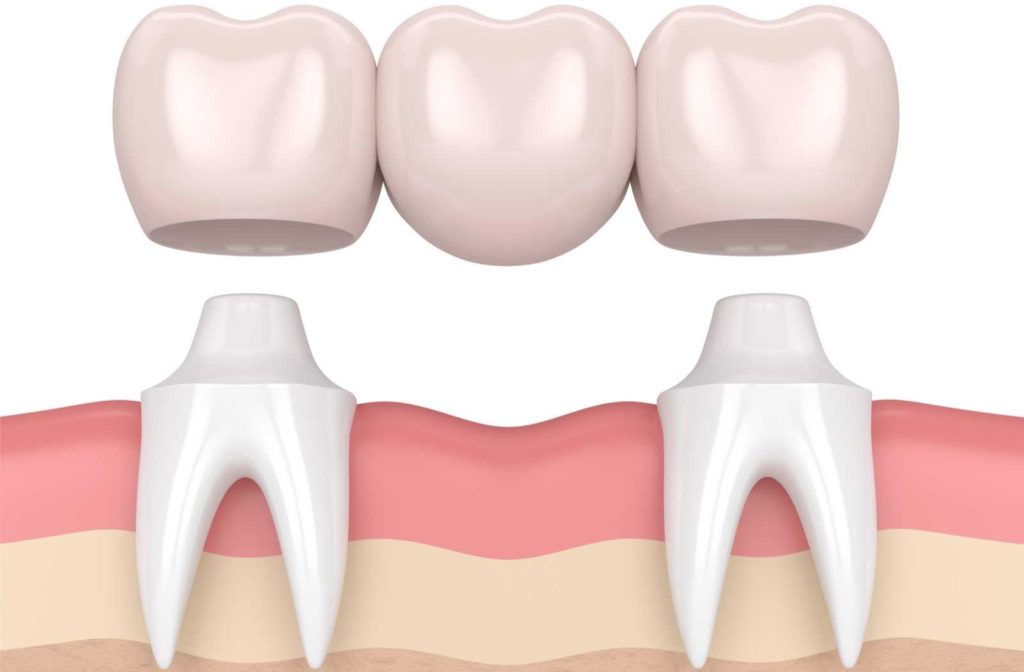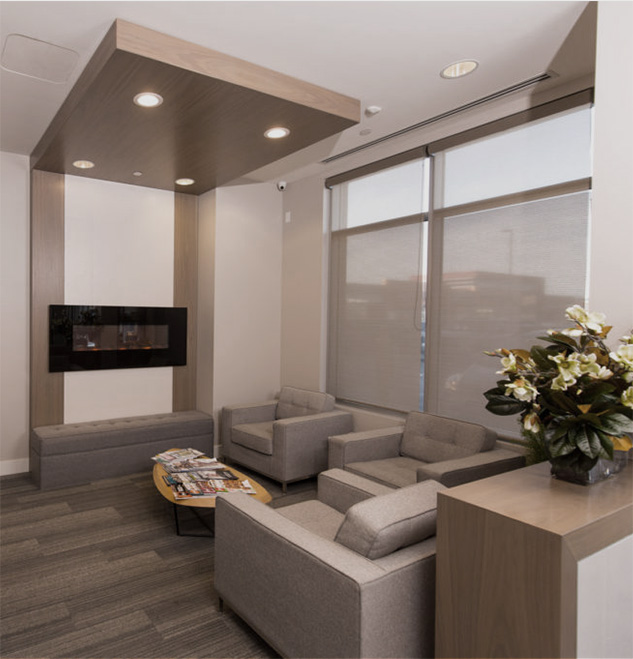
Missing teeth are no fun at all. If you’ve ever gotten the news from a dental exam that you’re faced with an extraction, you know there are a few tooth replacement options available. Leaving a gap in your teeth could end up being more trouble than it’s worth, so after you get an extraction, you might need to weigh the options on what will take a lost tooth’s place.
In a worst-case scenario, jaw bone with no tooth on it—at the site of a previous tooth extraction—can shrink over time. In case you opt for a dental implant there, you might even need a bone graft. Ultimately, you only have a short window to get a replacement for your teeth. One option is a dental crown on implants. But you may be better off with a dental bridge!
What Are Dental Bridges?
Dental bridges are a way of bridging your bite with an artificial tooth. Depending on the condition of your gums and jaw bone, as well as nearby teeth, they might be the best option for you after you get a tooth extraction.
When Do I Need a Tooth Extraction?
Any combination of tooth decay or dental trauma (physical injury to your teeth are an urgent dental emergency, by the way) could mean you require a tooth extraction. Extraction is an option if you have issues affecting the innermost parts of your teeth, resulting in dessication of the nerves and blood vessels in the center of your teeth.
But your dentist might recommend a root canal procedure (also known as an endodontic procedure), with a crown replacement. For each patient, there’s a cost-to-benefit in play for each option.
The difference between a dental bridge, and a crown is that a crown is like a whole tooth replacement, whereas the bridging part of a dental bridge (called the pontic) replaces the top half only, just covering the gums. But this pontic needs the help of nearby teeth, called abutments, to provide the stability needed in your bite.
A crown stabilizes a tooth by relying on its own strong foundation. A bridge relies on the strong foundations of nearby teeth, bridging the natural gap between teeth. If a bridge is working properly, you won’t have the issues commonly associated with tooth extractions.
Different Types of Dental Bridges
A dental bridge usually involves a crown, which can come in several types of material—from the same materials you find in crowns. In the case of dental bridges, you have the same choice of material, but there’s a lot more surface area in some cases, and you can even get several types of material in 1 bridge.
Traditional Dental Bridges
Traditional dental bridges involve two healthy teeth and a space between, left by a recent extraction. Your enamel needs to be filed down and bonded to the crowns. The crowns are fused to the pontic, usually all in the same material to look uniform and provide a solid bite.
Implant-Supported Dental Bridges
Implant-supported bridges differ from traditional bridges in their foundation. An implant is a screw that dentists embed in your jaw bone, replacing the function of your roots. A dental crown snaps onto the implant, and you have a sturdy false tooth.
Bridges & Implants
Bridging them is a relatively simple process after your implant surgery, where you can have two crowns with a pontic in between snap-on to 2 implants—with your extraction site taking the space in between.
Dental Implants vs. Roots of a Tooth
Your teeth have very strong foundations in their root. A typical tooth is like an iceberg, where the roots extend under the surface of your gums deep into your jaw. But in an extraction, the tooth is removed, roots and all. Implant supported dental bridges are the sturdiest option, with artificial roots fortifying your bite.
Cantilever Bridges
Cantilever bridges can leverage implants or traditional crowns. But they differ from other types of bridges in that they have only 1 abutment. This abutment bears the brunt of your bite pressure, so it carries some risks, but your dentist might recommend one if it benefits teeth near an extraction site.
Maryland Dental Bridges
These dental bridges offer the least invasive procedure, but they have distinctive wings, often metal because of the right rigidity and flexibility offered. These are bonded onto healthy abutment teeth, but the enamel needs to be removed at the bonding site.
Why Would You Need a Dental Bridge?
When you want to avoid several dental crowns for some reason, a dental bridge might be the solution. The key hazard of a tooth extraction is the void left behind. Your mouth is a changing, living thing, and that includes the jaw bone itself.
Your teeth naturally exert pressure on each neighbouring tooth by being in contact with them, so when that pressure is relieved, teeth near the extraction site rush in to take up space. This effect can drastically change your bite.
A dental bridge might be essential to avoiding malocclusion. Malocclusion means “bad bite,” and it can put uneven pressure on your teeth, wearing them down in critical places. If that isn’t corrected, you can lose more teeth to tooth decay, as the layers of some teeth wear away under disproportionate pressure whenever you bite down.
What to Expect from Your Dental Bridge Procedure
The process depends a lot on which kind of dental bridge you get, but the end result tends to be the same.
Preparing Abutments
Preparing the abutting teeth varies by the type of bridge you’re getting:
- If you’re getting traditional bridges, this means filing your teeth down to a fitting shape. All your enamel and even some dentin has to go.
- In case of Maryland dental bridges, just the enamel on the bonding sites will need to be removed on the abutting teeth. The rest of your enamel can stay.
- If you’re getting implant-supported bridges, 2 implants will need a foundation in your jaw bone.
Affixing the Bridge on the Abutments
Then dental crowns with a pontic bridge will be affixed onto the abutments at the same time. For Maryland bridges, you just need a simple bond on the wings where the abutting teeth make contact. For implants the crowns In case you’re getting a cantilever bridge, only 1 abutment will need to be affixed on an implant.
Your Dentist Can Recommend the Best Dental Bridge for You
Dental bridges allow patients to dodge getting an extra crown, without sacrificing your bite. Instead of 3 crowns on implants—or crowns on a natural tooth after a root canal—you can just get 2. In case you can get away with cantilever bridges, you might only need 1 crown!
If you’re looking at a tooth extraction or a root canal on several neighbouring teeth, we recommend booking an appointment and asking your dentist if a bridge might be right for you.








